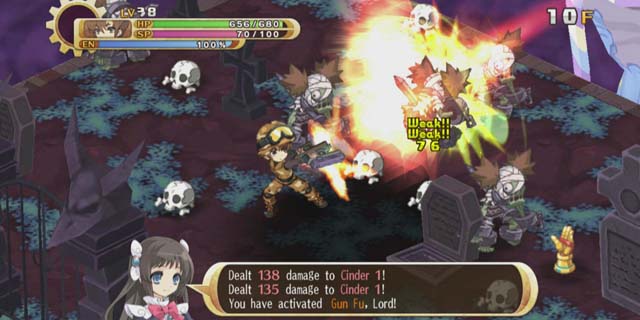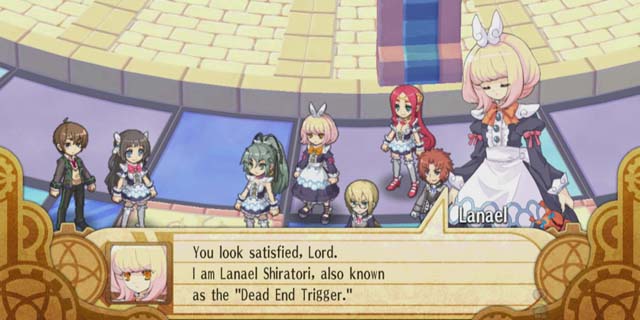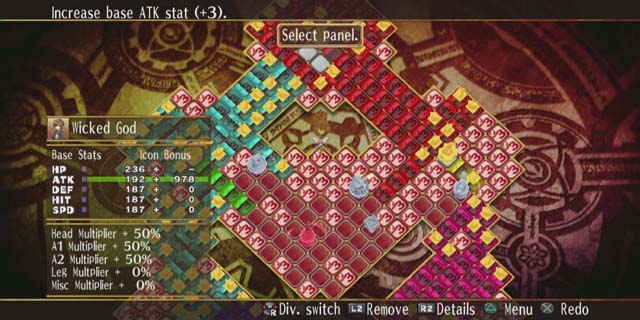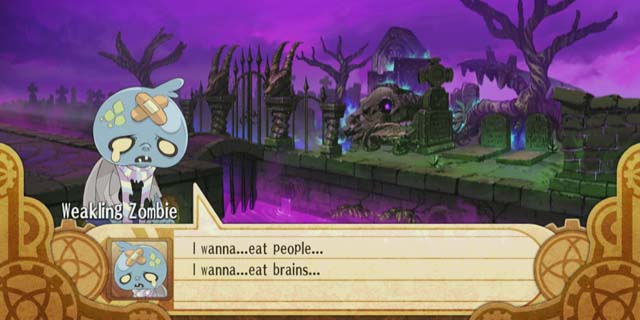
Nippon Ichi Software has been releasing niche anime games to the masses for the last several years. The company is constantly trying to put new spins on various RPG subgenres to challenge us with every title it releases. Z.H.P.: Unlosing Ranger vs. Darkdeath Evilman, a PSP title released back in 2010, marked its first foray into the roguelike. While it had its fair share of issues, it sets enough in place for The Guided Fate Paradox to improve upon the formula.
Our story follows the adventures of Renya Kagurazaka, a 17-year-old who claims to be the unluckiest person in the world. That all changes when he receives the grand prize from a lottery stand at the mall. What’s the prize? He becomes God. He’s asked to grant the wishes of people who pray to him for help. However, due to the huge volume of wishes, he can’t tend to them all. That’s where the job of the Fate Revolution Circuit comes in. This machine allows Renya to defeat the negative thoughts (portrayed as monsters in the associated dungeons) in the individuals’ minds, and change their lives for the better.

The Guided Fate Paradox manages to set itself apart from their other titles due to the driving force behind the character design. Noizi Ito is famous for her work on the Haruhi Suzumiya Japanese manga series. Fans of the series will see her style shine throughout the game’s main cast, and the added animations add a lot of life to the story.
The game improves upon the dungeon-crawling formula from Z.H.P., but streamlines it to play like Pokemon Mystery Dungeon. Each dungeon is riddled with monsters, traps and equipment for you to find and mess around with. Finding equipment is essential, and constantly use is key to improving your character. When an item is used enough, the item “bursts” and allows you to level up the item, as well as giving you an opportunity to increase stats. Upon exiting a dungeon, Renya receives boosts to his base stats and his level returns back to one. While the level might reset, the benefits stay with him.

It’s not a Nippon Ichi game unless there’s some sort of terrible difficulty spike, and Paradox delivers on that as soon as you leave the tutorial. The game is naturally difficult, and even unfair even if you’re progressing through the game normally. Because of the high difficulty level, you’re more inclined to die within dungeons. Dying in dungeons forces you to lose all your equipment on your character as well as your inventory, and even lose half of the money you have on-hand.
Like Disgaea, the field of movement is primarily on an isometric grid. While it might work for tactical games, it leads to a lot of awkward movement in dungeon-crawlers. I’ve found myself moving in the wrong direction numerous times, and ultimately getting attacked or triggering an attack I didn’t want to do.

Paradox also has some confusing control mappings. The game allows you to throw items and enemies along the field. To do so, you have to tilt the right stick up. However, when you’re not near something you can throw, the game uses that same action to access a quick-check menu. I found myself stumbling to pick up things a lot as a result. Along with the odd diagonal plane, it leaves you open to a lot of awkward and vulnerable situations that might cost you progress.
Problems aside, this is probably one of the easiest Nippon Ichi games to get into. With a largely humor-driven story filled to the brim with pop culture references and tropes, as well as a naturally-challenging premise, you’ll always find yourself engaged.
Pros: Engaging and humorous story, great character design
Cons: Sky-high difficulty, odd controls and button mapping



















